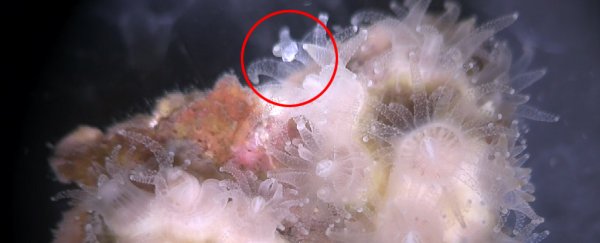Ocean plastic is an indiscriminate hazard. It harms fish and kills seabirds, which wash up with bellies full of trash. Turtles swallow it because, the thinking goes, they mistake the floating waste for jellyfish.
Less well known are the ways plastic damages the ocean's smaller inhabitants, plankton and corals, which sometimes are found with particles wedged in their teeny guts.
For years, biologists and conservationists assumed that most sea creatures ate plastic by accident, said Alexander Seymour, a geographic information systems analyst and marine researcher at Duke University in North Carolina.
Marine life, it seemed, was too confused or too hungry to avoid the junk.
A small but growing number of studies suggests another more disturbing reason. Humans may have invented plastic that is appetising.
"Plastics may be inherently tasty," said Austin Allen, a Duke marine science doctoral student. Allen and Seymour are the lead authors of a study just published in the journal Marine Pollution Bulletin.
Along with Duke marine ecologist Daniel Rittschof, they demonstrated that corals respond to microplastic fragments as though they were food.
The two-part laboratory study consisted of hand feeding coral as well as growing it in seawater tanks contaminated with plastic particles less than a millimetre in diameter.
During the feeding trials, the scientists picked up a plastic or sand particle with forceps and dropped it near a coral polyp. If the sand came near their mouths, the animals used tiny hairs covering their body to brush themselves clean.
But if a piece of plastic tumbled by, the corals snapped into action. They fired cellular harpoon guns, called cnidoblasts, which launched toxic barbs into the plastic particle. The corals scooped the plastic toward their mouths with their tentacles, then gobbled up the trash.
The researchers offered up polystyrene, polyvinyl chloride and six other types of plastic. More than 80 percent of the plastic particles were eaten. But a coral polyp tried to eat sand only once in 10 trials.
"What happens when you drop a particle of sand on a coral polyp is absolutely nothing at all," Seymour said.
Most of the time, the corals spat out ingested plastic within six hours. But in approximately 8 percent of the dozens of trials, the plastic became stuck inside the coral polyps for the duration of the 24-hour tests.
Corals do not hunt by sight - they have no eyes - and so must figure what is good to eat by using chemosensors, their version of a tongue.
This is a different strategy than using smell, which draws animals toward or away from an object.
"When an animal tastes something that's when they make a decision whether or not to eat it," said Matthew Savoca, a postdoctoral researcher at the National Oceanic and Atmospheric Administration's Southwest Fisheries Science Center who was not involved with this study.
The Duke scientists tried to alter the chemical profile of plastic by coating it in a microbial film. They hypothesised that corals might prefer such "candy," with the microorganisms hiding the taste of plastic and providing at least a few nutrients.
But they were surprised to find that corals preferred raw plastic. In the aquarium tests, the corals ingested the clean stuff at a rate of up to five greater than the bio-fouled version.
This preference, the researchers said, suggests factory plastic has an appealing ingredient.
"At least some of the hundreds of additives are acting as phagostimulant - a fancy word for compounds that are tasty," Seymour said.
Savoca also didn't expect corals to prefer plastic. In 2016, he and his colleagues reported that seabirds were attracted to smelly, bacteria-covered plastic, and he recently demonstrated that anchovy fish swarm around the odor of fouled plastic.
"We need to be thinking about the taste of plastic as a paradigm," Seymour said, "not just a problem for corals."
Few studies examine interactions between microplastics and corals, said Carlie Herring, a research analyst for NOAA's Marine Debris Program. The latest research "provides new insight into their relationship," she said.
The Duke authors cautioned that the relationship between plastic and coral may be different at sea.
Though earlier research demonstrated that wild corals eat plastic, their study does not provide evidence that corals prefer plastic bits to food items, for instance.
And plastic is unlikely to be as severe a threat as other, well-known dangers: coral bleaching, acidic oceans and dynamite fishing. "This is just another drop in the bucket among the very large challenges faced by these species," Seymour said.
Yet there is no question that plastic has penetrated the ocean, and even its remotest corner is not beyond human influence.
Robot submersibles have spotted plastic bags on slopes leading to the Mariana Trench, the deepest part of the Pacific. Where no explorer will ever plant a flag or footprint, there is already plastic.
Seymour and his colleagues say they hope their study will be an ecological call-to-arms to discover what plastic ingredient appeals to coral.
Savoca has the same question: "If in fact there are phagostimulants in clean plastic," he said, "let's find out what those are and remove them."
2017 © The Washington Post
This article was originally published by The Washington Post.
